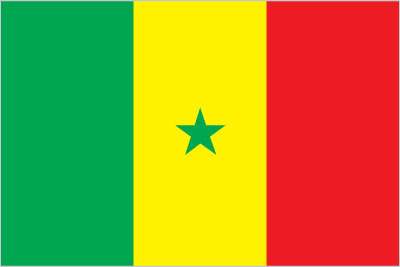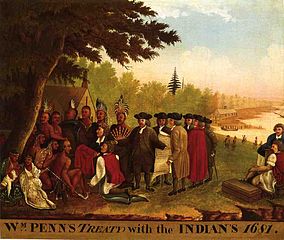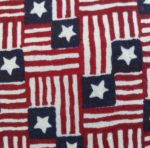Pony Express had its first  run in 1860. Prior to the Pony Express, a letter took three weeks to make its way across country. William Guin and William Russell started the Pony Express to speed up the delivery of mail. They hired 80 riders, bought 400 horses, and established 190 stations. The riders, mostly teenagers, had to be light weight and in excellent shape. They rode day and night and in all kinds of weather. A letter carried via the Pony Express left St. Joseph, Missouri and arrived in Sacramento, California (1,966 miles) in ten days. The Pony Express ended in October 26, 1861, two days after the telegraph started. Children could write “journals” as if they were the actual riders. They could describe their “adventures.” Children could also learn more at: Pony Express.
run in 1860. Prior to the Pony Express, a letter took three weeks to make its way across country. William Guin and William Russell started the Pony Express to speed up the delivery of mail. They hired 80 riders, bought 400 horses, and established 190 stations. The riders, mostly teenagers, had to be light weight and in excellent shape. They rode day and night and in all kinds of weather. A letter carried via the Pony Express left St. Joseph, Missouri and arrived in Sacramento, California (1,966 miles) in ten days. The Pony Express ended in October 26, 1861, two days after the telegraph started. Children could write “journals” as if they were the actual riders. They could describe their “adventures.” Children could also learn more at: Pony Express.
First cell phone call was made in 1973. Martin Cooper, a Motorola executive, used the DynaTAC, which was called the “Brick.” The phone was 8 inches by 1.5 inches by 4 inches. It weighed 2.5 pounds. Children can listen to Martin Cooper explain the event at: https://www.youtube.com/watch?v=DMbGrakUHc4
Sandra Boynton (born Orange, New Jersey, 1953) has written and illustrated at least 50 books, most of them for young children. Her books include Amazing Cows, Happy Birthday, Little Pookie, and the wonderful board book Snuggle Puppy.
John Burroughs (born Roxbury, New York, 1837; died Kingsville, Ohio, March 29, 1921) was a writer and naturalist. He wrote at least 32 books over 50 years on such topics as Ways of Nature and The Breath of Life. Children can read many of his works at: Project Gutenberg.
Jane Goodall (born London, England, 1934) is an anthropologist. She studied the behavior of wild chimpanzees for a number of years. Idea: Have students read about her observation techniques, choose a pet or a wild animal, and make observations similar to Goodall’s technique. Children could also read Me…Jane, a biography written by Patrick McDonnell.
Edward Everett Hale (born Boston, Massachusetts, 1822; died Boston, Massachusetts, June 10, 1909) was a clergyman and a writer. He is most famous for his story, “The Man Without a Country.” He also served as chaplain of the United States Senate from 1903 until he died. Children can read some of his work, including “The Man Without a Country,” at: Project Gutenberg.
Washington Irving (born New York, New York, 1783; died Tarrytown, New York, November 28, 1859) may have been one of the first great American writers and historians. His writings include The Sketch Book (containing “Rip van Winkle” and “The Legend of Sleepy Hollow”), Tales of a Traveller, The Life of Washington, and The Alhambra. Children can read many of his works at: Project Gutenberg. They can also learn more at: Washington Irving.
Earl Lloyd (born Alexandria, Virginia, 1928; died Crossville, Tennessee, February 26, 2015) was the First African American to play for the NBA. His debut occurred October 31, 1950, when he played for the Washington Capitols at a game held in Rochester, New York. He went on to play 560 games in nine seasons. He then became the first African American assistant basketball coach and was head coach for the Detroit Pistons. Children could learn more at: Earl Lloyd.

Carrots
International Carrot Day is celebrated today. Started in 2003, the day honors the healthy and versatile vegetable. While the majority of carrots consumed are orange, varieties of carrots are red, purple, white, and even black. The carrot is a root vegetable, but the tops can be eaten as greens. The vegetable can be prepared in a variety of ways, from carrot slaw to carrot cake. Carrots provide many vitamins and minerals, but they are especially high in Vitamin A.
Children, knowing that a carrot is a root, could classify different vegetables as to what parts we eat. They could list other roots, such as turnips and parsnips. They could list stem vegetables, tuber vegetables, leafy vegetables, and even vegetables that are really fruits, such as squash and peppers.

Flag of Senegal
Senegal celebrates Independence Day. France gave up custody of the country in 1960. According to the CIA World Factbook, Senegal is a bit smaller than the state of South Dakota. Located in western Africa, it borders the Atlantic Ocean. Plains cover most of the country, but some jungle grows in the southwestern portions. About thirteen million people live in the country. Dakar is the capital. Older children can learn more at: Senegal.
 United States flag with thirteen stripes and a star for each state was adopted in 1818. Prior to this time, a star and stripe was added each time a state was admitted to the Union. By 1817 the flag had twenty stripes and twenty stars, and the flag was becoming cumbersome. Samuel Chester Reid, a naval hero of the War of 1812, suggested the stripes remain at thirteen, and the number of stars change as new states joined the union. Children could view a timeline of the American flag at: http://www.ushistory.org/betsy/flagfact.html.
United States flag with thirteen stripes and a star for each state was adopted in 1818. Prior to this time, a star and stripe was added each time a state was admitted to the Union. By 1817 the flag had twenty stripes and twenty stars, and the flag was becoming cumbersome. Samuel Chester Reid, a naval hero of the War of 1812, suggested the stripes remain at thirteen, and the number of stars change as new states joined the union. Children could view a timeline of the American flag at: http://www.ushistory.org/betsy/flagfact.html.

Fruits Loaded with Vitamin C
Vitamin C was discovered by C. G. King in 1932. Vitamin C, also known as ascorbic acid, builds strong bones and teeth. It speeds up the healing process of wounds. Idea: Vitamin C is found in citrus fruits, tomatoes, potatoes, strawberries, cantaloupe, and cabbage. Children could make a fruit salad of strawberries, melon, and oranges. Discuss the benefits of vitamin C as children enjoy the treat. Older children can learn more at: Vitamin C.

Truman and Diplomats Signing NATO Treaty
North American Treaty was signed in 1949. Twelve nations formed the original North American Treaty Organization: Belgium, Canada, Denmark, France, Great Britain, Iceland, Italy, Luxembourg, the Netherlands, Norway, Portugal, and the United States. Greece and Turkey became members in 1951, and West Germany joined in 1954. Spain joined in 1982. Czechia, Hungary, and Poland became members in 1999. Bulgaria, Estonia, Latvia, Lithuania, Romania, Slovakia, and Slovenia joined in 2004. Albania and Croatia were admitted in 2009. Montenegro became a member in 2017, and North Macedonia joined in 2020. On this day in 2023 Finland became a member. Today NATO has 31 members. The main purpose of NATO is protection; an attack against one member is an attack against all members. Idea: Children could locate these countries on a world map and decide whether all countries benefit equally from this treaty. Children can learn more at: NATO.
Maya Angelou (born Saint Louis, Missouri, 1928; died Winston-Salem, North Carolina, May 28, 2014) was an author and a poet. One of her most famous books is I Know Why the Caged Bird Sings. Children can learn more at a site devoted to her: Maya Angelou.
Dorothea Lynde Dix (born Hampden, Maine, 1802; died Trenton, New Jersey, July 17, 1887) fought for social reform, especially regarding jails, insane asylums, and orphanages. Children could read Breaking the Chains: The Crusade of Dorothea Lynde Dix, by Peggy Colman. Older children could learn more at: Dorothea Dix.
Phoebe Gilman (born New York New York, 1940; died Toronto, Canada, August 29, 2002) was a picture book author and illustrator. Her works include Grandma and the Pirates and Jillian Jiggs.

Hicks Penn Treaty
Edward Hicks (born Langhorne, Pennsylvania, 1780; died Newtown, Pennsylvania, August 23, 1849) was a self-taught artist known for his many Peaceable Kingdoms. Children can see some of his works by visit this website and clicking on the names of the paintings: Edward Hicks.
Elizabeth Levy (born Buffalo, New York, 1942) has written over 100 children’s books. Her books include the Fletcher mysteries, the Something Queer is Going On series, and the Jodi and Jake mysteries. Children can learn more at: Elizabeth Levy.
Johanna Reiss (born Winterswijk, Netherlands, 1932) writes books for children. She moved to the United States during the 1950’s. She wrote The Upstairs Room, a memoir of her growing up during World War II. The book received a 1973 Newbery Honor Award and a Jane Addams Peace Association Honor Award. Her other books are also autobiographical. Children can view her website at: Johanna Reiss.
Glen Rounds (born near Wall, South Dakota, 1906; died Pinehurst, North Carolina, September 27, 2002) wrote and illustrated at least 100 children’s books. His works included Ol Paul, the Mighty Logger and Wild Horses of the Red Desert. Children could learn more at: Glen Rounds.
